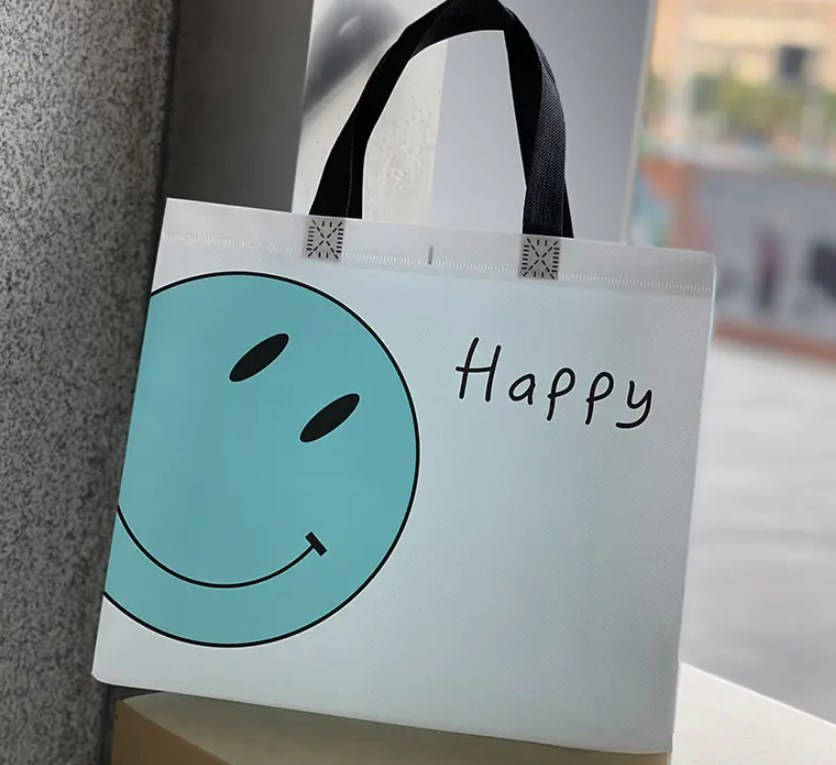Non-woven shopping bags have gained popularity as an eco-friendly alternative to traditional plastic bags. As consumers increasingly seek sustainable options, many wonder about the practical features of these bags, especially whether they offer waterproof protection. Understanding the water resistance of non-woven shopping bags is essential for users who want reliable, reusable bags that can handle various weather and shopping conditions.
Material Structure and Water Resistance
Non-woven shopping bags are typically made from polypropylene fibers bonded together through heat, chemicals, or mechanical processes, forming a fabric-like material. Unlike woven fabrics, the fibers in non-woven materials are randomly arranged and bonded, which creates a porous structure. This porosity is the key to their breathability, but also affects how well they resist water.
Generally, non-woven polypropylene is not fully waterproof. When exposed to light moisture, such as drizzles or minor spills, these bags can repel some water due to the hydrophobic nature of polypropylene fibers. However, during heavy rain or if submerged, water can seep through the tiny gaps between fibers, making the interior wet.
Coatings and Lamination Enhancements
To improve water resistance, many manufacturers apply additional coatings or lamination layers to non-woven shopping bags. These treatments create a barrier that prevents water from penetrating the fabric. For example, polyethylene or polypropylene lamination adds a thin plastic film over the bag’s surface, significantly boosting its waterproof properties.
Bags with such lamination are more suited for carrying wet items or shopping in rainy conditions. However, this added layer may reduce the bag’s breathability and recyclability, creating trade-offs between functionality and environmental benefits.
Comparisons with Other Bag Types
Compared to fully waterproof bags made from materials like nylon or polyester with waterproof membranes, non-woven shopping bags are less protective against water. Still, they perform better than traditional paper bags, which quickly degrade when wet.
For everyday grocery shopping, especially in mild weather, a laminated non-woven bag provides adequate water resistance. For harsher conditions, users might prefer bags specifically designed for waterproof performance.
Practical Tips for Users
If water resistance is a priority, it’s important to check whether a non-woven shopping bag has a laminated or coated surface. Many suppliers clearly state this feature in their product descriptions. Additionally, users can consider carrying a separate waterproof bag or rain cover for heavy rain situations.
Proper care can also prolong the water-resistant qualities of these bags. Avoid prolonged exposure to water and dry the bags thoroughly after they get wet to prevent odors or mold growth.
Environmental Considerations
One of the main advantages of non-woven shopping bags is their lower environmental impact compared to single-use plastics. While lamination improves water resistance, it may complicate recycling since the composite materials can be harder to process. Consumers and manufacturers must balance water resistance needs with eco-friendliness goals.
Non-woven shopping bags, by themselves, are not fully waterproof due to their porous fiber structure. However, when enhanced with lamination or coatings, they can offer significant water resistance suitable for most shopping needs. Understanding these differences helps users make informed choices based on their lifestyle and environmental priorities.
Colour: Various colours
Pattern: Customizable
Width: 5cm~60cm
Length: Customizable
Thickness: 0.08mm-1.2mm (customisable)
Material: Non-woven
Process: Die-cutting
Application: Clothing, food, daily necessities, cosmetics, cultural products, etc.
